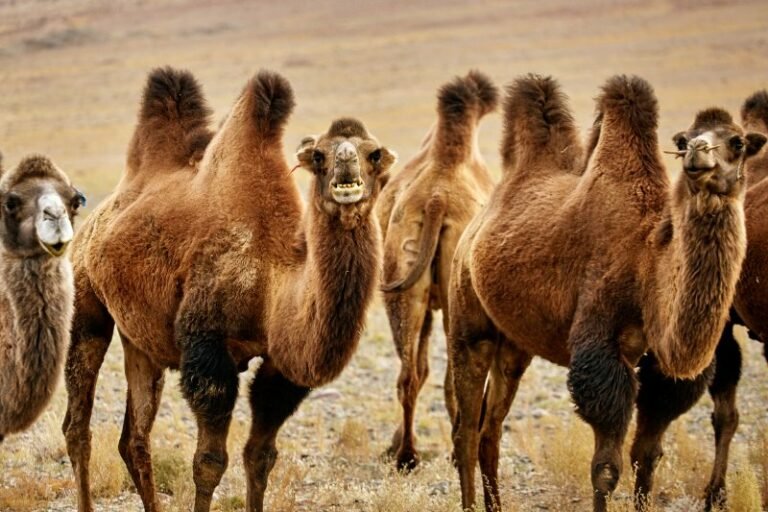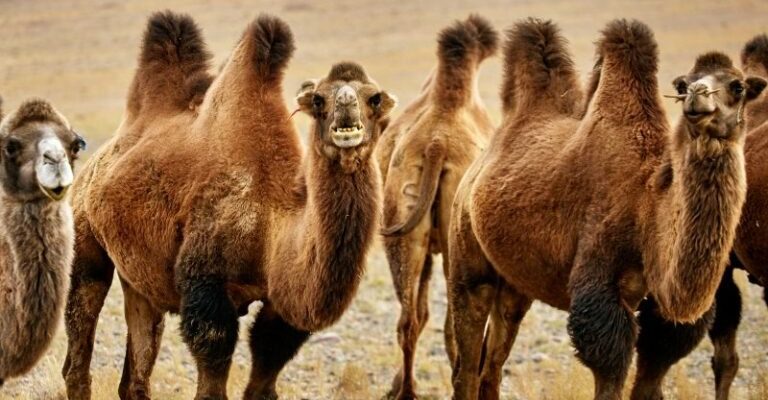
Exploring the world of camels is not just about understanding their unique adaptations; it’s also about uncovering the challenges they face in today’s rapidly changing environment. From habitat loss to climate change, various factors are putting pressure on these resilient animals. In this blog post, we’ll dive into the current status of camels globally, what it means for conservation, and why it matters to us all.
Current Status of Camel Populations
Camels exist in various species, but the two most well-known are the Dromedary (one hump) and the Bactrian (two humps). The Dromedary is the dominant type, making up about 90% of the world’s camel population. Now, while Dromedaries are relatively abundant, the Bactrian camel has been classified as endangered, mainly due to habitat loss and hunting pressures.
You might think, “What does it matter if one type of camel is more common than the other?” Well, it serves as a reminder that biodiversity is crucial. Each species plays a unique role in its ecosystem, and losing even one type can have ripple effects. If Bactrian camels continue to decline, it could impact their habitats in ways we don’t fully understand yet.
The Bactrian Camel’s Plight
The Bactrian camel is native to the harsh terrains of Central Asia, specifically Mongolia and China. They’re well-adapted to extreme climates, able to withstand both freezing temperatures and scorching heat. However, their numbers have dwindled, with estimates suggesting fewer than 1,000 individuals remain in the wild. Most Bactrian camels today are domesticated, serving as vital resources for local communities.
What’s driving their decline? Habitat fragmentation is one major factor. As human populations expand, roads and urban areas encroach on their natural habitats. Additionally, the demand for camel products, such as meat and wool, puts extra pressure on their wild populations. This situation paints a sobering picture—while they’re resilient creatures, even camels have their limits.
Conservation Efforts in Place
Luckily, efforts are underway to protect camels, particularly the endangered Bactrian species. Conservation organizations and governments are joining forces to create protective measures and restore habitats.
For instance, initiatives like community-based wildlife conservation are focusing on engaging local people. By involving local communities in conservation efforts, we can foster a sense of ownership and responsibility. When people see the value in preserving these animals, they are more likely to protect them.
You might also hear about breeding programs designed to increase Bactrian camel populations. These programs can help preserve genetic diversity, ensuring that the species remains viable for future generations. The more we know, the better we can plan for their survival.
Global Partnerships for Camel Conservation
International collaboration is crucial for effective camel conservation. Many countries are now recognizing the importance of sharing resources, knowledge, and expertise. Organizations like the World Wildlife Fund (WWF) and International Union for Conservation of Nature (IUCN) are at the forefront of these efforts, making strides in research and advocacy.
One remarkable partnership that’s gaining traction is between scientists, local governments, and NGOs. They’re coming together to study camel behavior, track populations, and develop strategies to mitigate human-wildlife conflicts. By pooling their resources, they’re making more strides than they could alone.
The Role of Climate Change
Climate change is a significant threat to camels, just as it is to many other species. Rising temperatures, shifting rainfall patterns, and extreme weather events can disrupt the habitats that camels rely on. For example, droughts can lead to water shortages, making it harder for camels to find food and stay hydrated.
With their remarkable ability to store fat and water, camels might seem equipped to handle tough conditions. However, even they have their limits. When food becomes scarce or when their habitats are eroded, these majestic animals struggle to survive.
Here’s a thought: How can we help? Supporting sustainable practices and advocating for climate policies can create a ripple effect that benefits not just camels but countless other species and habitats at risk.
Educating Future Generations
Education is key—and that’s where you come in! Whether it’s through school programs or raising awareness in your community, spreading knowledge about the importance of preserving camels can inspire action. Classroom projects on camel biology or community talks can spark interest in wildlife conservation.
Plus, sharing stories about camels and their habitats can create empathy and encourage others to care. The more people know about these incredible creatures, the more likely they are to support conservation efforts. Imagine a future where children grow up understanding the importance of biodiversity and the role camels play in it.
Why Camels Matter
So, why should we care about camels beyond their funny looks and fascinating biology? For many communities, camels are more than just animals—they’re a way of life. They provide transportation, milk, and wool, supporting livelihoods and cultures. Losing camels could mean losing those traditions and the knowledge that comes with them.
Camels also contribute significantly to their ecosystems. By grazing on vegetation, they help shape the landscape, promoting a healthy habitat for other species. Think of them as natural gardeners, maintaining the balance of their environment. When we protect camels, we’re also protecting entire ecosystems.
Connecting the Dots
We often hear about endangered species and the need for conservation, but it’s easy to feel disconnected from the issue, especially when these animals live halfway across the world. Yet, the fate of camels ties back to a global network of environmental health. Their struggles reflect broader problems like climate change, habitat destruction, and human-wildlife conflict—the very issues our planet faces today.
By supporting conservation efforts for camels, we’re not only helping a single species—we’re supporting the entire ecosystem and working towards a healthier planet.
As we’ve explored, camels, particularly the Bactrian species, face numerous threats that could drive them closer to extinction. However, conservation efforts are making headway, emphasizing the importance of local communities and global partnerships.
If you’re inspired to help, consider getting involved. Whether it’s through donations to conservation organizations, sharing information with others, or supporting sustainable practices in your area, every bit helps. Remember, protecting camels is about more than just saving a species; it’s about preserving the rich tapestry of life on our planet. Together, we can make a difference—one camel at a time.

